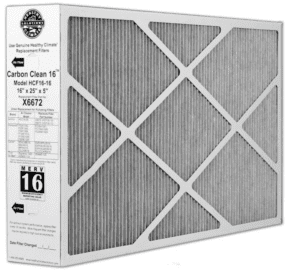Inspecting a residential HVAC system requires a thorough evaluation of various components to ensure proper functionality, efficiency, and safety. No matter who you hire to service and inspect your system they should provide you an overview of their findings when completed.
New systems should be serviced a minimum of once a year; systems greater than 5 years old we recommend a bi-annual inspection. (One in the fall to be ready for winter weather and to ensure the furnace is in top condition and once in spring to be ready for the blistering weather we enjoy here in Dallas-Fort Worth during summer).
Here’s a detailed inspection checklist:
Outdoor Unit (Condenser):
Visual Inspection:
- Check for any physical damage to the condenser unit, such as dents or corrosion.
- Ensure that the unit is level and securely mounted to the ground or concrete pad.
- Remove any debris, leaves, or vegetation around the unit that could obstruct airflow.
Condenser Coils:
- Inspect the condenser coils for dirt, debris, or signs of corrosion.
- Clean the coils using a soft brush or coil cleaner if necessary to improve heat transfer efficiency.
Fan Motor and Blades:
- Check the condition of the fan motor and blades for wear and tear.
- Lubricate the fan motor bearings if applicable.
- Ensure that the fan blades are clean and free of debris.
Electrical Components:
- Inspect electrical wiring and connections for signs of wear, damage, or corrosion.
- Check the condition of the contactor, capacitor, and relay switches.
- Test electrical components for proper voltage and current flow.
Refrigerant Levels:
- Measure refrigerant pressure and temperature to ensure proper levels.
- Check for refrigerant leaks using a leak detector or soap solution.
- Recharge refrigerant if levels are low and repair any leaks if found.
Indoor Unit (Air Handler or Furnace): (Usually in the Attic)
Filter:
- Inspect and replace the air filter if dirty or clogged.
- Recommend using a high-efficiency filter for improved indoor air quality.
Evaporator Coil:
- Inspect the evaporator coil for dirt, dust, or debris buildup.
- Clean the coil using a foaming coil cleaner or professional coil cleaning solution if necessary.
Blower Motor and Assembly:
- Check the blower motor and fan assembly for proper operation.
- Lubricate motor bearings if applicable.
- Inspect blower wheel for balance and cleanliness.
Ductwork:
- Inspect ductwork for leaks, damage, or signs of deterioration.
- Seal any leaks or gaps in duct joints using duct tape or mastic sealant.
- Ensure that ducts are properly insulated and supported.
Safety Controls:
- Test safety controls such as limit switches, pressure switches, and flame sensors for proper operation.
- Verify that the thermostat is functioning correctly and accurately controlling temperature settings.
Combustion System (for Furnaces):
- Inspect burner assembly for rust, corrosion, or debris buildup.
- Check for proper ignition and flame sensor operation.
- Ensure that the flue pipe is securely connected and properly vented to the exterior.
Condensate Drain:
- Inspect the condensate drain line for clogs or blockages.
- Clean the drain line and condensate pan if necessary to prevent water overflow or damage.
Overall System Performance:
- Run the HVAC system through a complete heating and cooling cycle.
- Monitor temperature differentials between supply and return air.
- Check airflow from vents for proper volume and temperature.
- It’s important to note that while this checklist covers many aspects of a residential HVAC system inspection, it may not cover every potential issue. It’s always recommended to consult with a licensed HVAC professional for a comprehensive inspection and any necessary repairs or maintenance tasks. Additionally, regular maintenance and servicing of the HVAC system are essential for extending its lifespan and ensuring optimal performance and efficiency.
HVAC Filter Selection – Air Quality, Your Health and Comfort
 Let’s discuss air quality inside your home. Those with difficulty breathing due to illness or allergies will want to read more about MIRV rating prior to selecting a filter for your home.
Let’s discuss air quality inside your home. Those with difficulty breathing due to illness or allergies will want to read more about MIRV rating prior to selecting a filter for your home.
MERV (Minimum Efficiency Reporting Value) ratings are used to measure the effectiveness of air filters in capturing airborne particles. The higher the MERV rating, the more efficient the filter is at trapping particles. However, the recommended MERV rating for a home HVAC system depends on several factors, including the system’s capabilities, indoor air quality needs, and specific requirements.
ARIEL suggests you consider that in Texas the winds blow in pollen from the trees and prairies year-round. Due to the weather, most Texans keep doors and window shut most of the time which means these pollens are trapped along with other pollutants from cooking, and your home’s furnishings. Newer homes are being built much tighter than years ago with a need to bring in outside air via the HVAC system to ensure a healthy amount of outside air is added daily to ensure good indoor air turnover.
Here are some general guidelines:
MERV 8-11:
- Suitable for most residential HVAC systems.
- Provides good filtration for capturing dust, pollen, pet dander, and larger particles.
- Balances effective filtration with minimal airflow resistance, ensuring efficient system operation.
MERV 12-13:
- Provides enhanced filtration for homes with occupants who suffer from allergies, asthma, or respiratory conditions.
- Captures smaller particles such as mold spores, fine dust, and some bacteria.
- May require periodic filter replacement to maintain airflow and system efficiency.
MERV 14-16:
- Offers high-efficiency filtration for homes with specific air quality concerns, such as severe allergies or respiratory sensitivities.
- Captures very small particles, including smoke, viruses, and bacteria.
- Requires regular filter replacement and may increase energy consumption due to higher airflow resistance.
It’s important to consider the following factors when selecting the appropriate MERV rating for your home HVAC system:
System Compatibility: Ensure that the selected MERV rating is compatible with your HVAC system’s airflow capacity. Using a filter with a MERV rating that is too high can restrict airflow and strain the system, leading to reduced efficiency and potential damage.
Indoor Air Quality Needs: Assess your indoor air quality needs, including any specific concerns or sensitivities related to allergies, respiratory conditions, or indoor pollutants. Choose a MERV rating that provides adequate filtration for your household’s requirements.
Filter Replacement Schedule: Higher MERV-rated filters may require more frequent replacement to maintain airflow and system performance. Consider the cost and convenience of filter replacement when selecting a MERV rating.
Professional Advice: Consult with a qualified HVAC technician or air quality specialist to determine the most suitable MERV rating for your home HVAC system. They can assess your specific needs and recommend the appropriate filter for optimal indoor air quality and system efficiency.
Overall, selecting the right MERV rating for your home HVAC system involves balancing filtration effectiveness, system compatibility, and indoor air quality requirements. Choose a MERV rating that provides the desired level of filtration without compromising system performance or energy efficiency.

